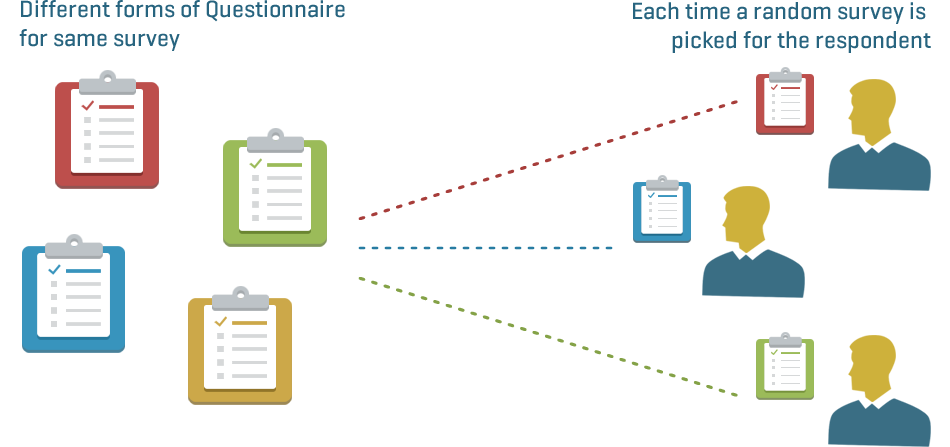
Split-ballot technique is used, where some questions were asked of part of the sample and other questions were asked of another part of the sample. Basic questions were asked of all participants. As a result, the totals for some of the variables you analyze may not total the numbers of completed cases.
Split ballot technique is a procedure where a sample is divided into two halves and each receives a slightly different questionnaire. The split-ballot technique consists of giving different forms of the questionnaire to equivalent portions of the sample. It reduces the effect of position bias when using multiple-choice questions in a questionnaire. Split-ballot technique includes experimental manipulations. It compares two closely related ways of assessing willingness to express opinions.Split ballot technique uses One-half of the questionnaires are worded with greater than listed first and the other half with less than first. This procedure will aid in reducing potential bias.
Survey Analytics utilizes a split-ballot technique to measure the effects of two frames, regulation versus non-regulation. A secondary manipulation, varying the order of schemata measures (frame first versus schema measures first), tests the role of schemata in framing effects. Split-ballot technique allow you to try out different versions of the same questions (with a later check item comon to both) to see which version seems to result in the most accurate reporting. It also ensures that the response frequencies will be stable enough for you to draw the necessary conclusions. It allows researchers to make causal interfences, and help them to be more certain about the reasons for any effects they obtain.
Split Ballot SurveysThree aspects of the most important problem question used in agenda-setting research to measure issue salience among the public were examined. A split-ballot in a state-wide survey compared versions of the public agenda with a social frame of reference versus a personal frame of reference, versions using the traditional term problem versus issue, and the effects of question order. High correlations between the different versions were found in all three sets of comparisons. |
Start your Free trial Split Ballot Surveys now.Please fill out the form to get in touch with Survey Analytics. We will follow up within one business day. |
Related Links and Resources
|
|
|
|
|
|
|
|



